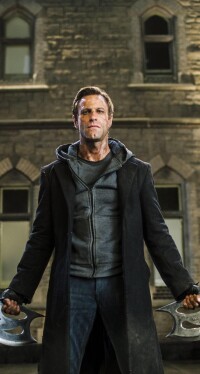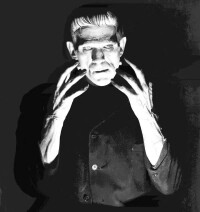共找到14條詞條名為弗蘭肯斯坦的結果 展開
弗蘭肯斯坦
小說《弗蘭肯斯坦》中的角色之一
弗蘭肯斯坦是瑪麗·雪萊創作的長篇小說《弗蘭肯斯坦》中的人物,是一個瘋狂的科學家。後來用以指代“頑固的人”或“人形怪物”。
“弗蘭肯斯坦”是小說中那個瘋狂科學家的名字,他用許多碎屍塊拼接成一個“人”,並用閃電將其激活。《弗蘭肯斯坦》已經成為科幻史上的經典,很多幻想類影視作品中經常出現這個怪物的翻版。

弗蘭肯斯坦
“弗蘭肯斯坦”一詞後來用以指代“頑固的人”或“人形怪物”,以及“脫離控制的創造物”等。
2004年《弗蘭肯斯坦》
2015年《維克多·弗蘭肯斯坦》
2015年《屠魔戰士》
偏執的科學怪人

弗蘭肯斯坦
Frankenstein is enormously important as a prototype for science fiction and as an early feminist work.
Background of Frankenstein
Mary Shelley was born in 18th-century London to two influential writers. Her mother, Mary Wollstonecraft, was a radical feminist who died after giving birth to Mary, and her father, William Godwin, raised her alone.
Mary left home at 16, married Percy Shelley after his first wife's suicide, and wrote Frankenstein in a writer's challenge from Lord Byron in 1816-1817. The story, based on a horrendous vision, was composed during sweeping life changes. Frankenstein was published anonymously in 1818. However, the story is enduring in its psychological drama, questions asked, and memorable characterizations. The story has adapted to many forms, with each adaptation telling a very different version of Shelley's original tale.
Frankenstein is an advisory notice done up in gothic costume, warning post-industrial society about the explosion of scientific knowledge and its potential misapplication and the subsequent dehumanization of mankind. Much as the silent sci-fi film Metropolis warned of the need for labor unions, Frankenstein warned of the need for considered action in the use of knowledge, and the alienation in store for driven knowledge seekers. In Frankenstein, Shelley asks who exactly the real monster is.
About the Novel: Frankenstein
In the beginning, Dr. Frankenstein is rescued from an ice flow in the sea near the North Pole. Chased through the Arctic by his Creature, Victor Frankenstein is saved by Captain Walton, who listens to the tale of the quest for knowledge--all gone wrong. Victor describes his childhood as a paradise, where his mother and father indulged him. But, his parents also failed to teach him reality, cause-and-effect, or the principles of respect. With these deficiencies, he considered his adopted sister Elizabeth a possession that he married to own.
Elizabeth could not help Victor overcome his addiction to creating a superhuman species. Victor achieved the goal of his addiction and was subsequently repulsed by it. Elizabeth was quite literally killed by his addiction as Victor's Creature destroyed everything that was dear to him. His parents had abandoned his soul in their enabling, and he abandoned his own creation without a name and without a thought.
Frankenstein reveals three generations of monsters--personified in Victor's mother, Victor, and the Creature. In addition, Elizabeth was reduced to monster status in her treatment as an object, and Mary Shelley herself was a monster (an educated feminist) who could not put her name to her own work.
Victor, the Creature, and Mary Shelley were all different from the mainstream society that rejected them as monstrous: a radical scientist, an inhuman creation, and a feminist without a mother. Victor lost everyone of value, Shelley lost her mother at birth, and the Creature could not fit in anywhere. The Creature's abandonment by parent and society is similar to that of the feminist for over two centuries. Feminists were scorned and abandoned as they obtained knowledge and subsequent power to participate more fully in societies. As portrayed in Katja von Garnier's 2004 film Iron Jawed Angels, feminists were attacked, beaten, and shunned, just as was the Creature in Frankenstein. Shelley must have felt such abandonment and rejection, considering that her father educated her extensively, but she could not sign her own book.
